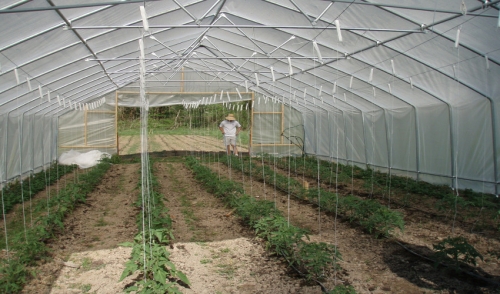Treating Seasonal Hot Spots on Pets
Hot spots can be uncomfortable for your pet, but how can you treat this itchy irritation? Understanding more about hot spots can help you give your pet relief...

Hoop houses are a quick, easy type of greenhouse, but are they right for your gardening? Learning more about this technique can help you decide if your green thumb is ready for hoops.
What Is a Hoop House?
A hoop house goes by many names: a polytunnel, hoop tunnel, hoophouse, polyhouse or hoop greenhouse. They are all the same type of structure, however – a plastic-covered tunnel that protects and nurtures plants. The height, width and length of the house will vary depending on what plants you are growing inside it, and it may be square, semi-circular, triangular or dome-shaped.
Inside the hoop house, solar radiation heats up the soil, air and plants, and the plastic covering helps raise humidity and conserve moisture. This can not only extend the growing season in both spring and fall to allow more crops to be raised, but it can create a microclimate to allow you to grow plants that might not normally thrive in your area.
Hoop houses also provide great protection for plants. Damaging hail, severe storms, scorching sun and drying winds will do less harm to plants that are in a hoop house. Birds cannot get through the plastic to nibble on plants, and bugs are also minimized inside the house. This can greatly increase the yield of your plants as well as their quality.
Building a Hoop House
While you can buy kits for different sizes and styles of tunnels, it is easy to build your own hoop house.
Once assembled, your hoop house will be ready to shelter and nurture plants. Be sure to check the house regularly, however, as it will naturally be stressed by weather conditions and overall use, and holes or rips can develop or the frame may loosen. If spotted quickly, these problems can be repaired without difficulty or damage to any plants.
Plants for Your Hoop House
Depending on the size and style of your hoop house, you can use it for all types of gardening. The season, soil type, time of year and other factors will affect what plants thrive in your house, but there are many options. If you plan on using your hoop house during cooler weather to extend the growing season, opt for cold tolerant plants such as carrots, radishes, beets, turnips, spinach, lettuce and onions. For warm season growing, consider heat-loving plants such as tomatoes, strawberries, eggplants, peppers, melons and flowers to be cut for bouquets.
No matter what your gardening plans, a hoop house can help you make the most of every moment of your gardening season – and even make many more moments you can take advantage of.

We currently do not have any events scheduled.

Hot spots can be uncomfortable for your pet, but how can you treat this itchy irritation? Understanding more about hot spots can help you give your pet relief...
Comments